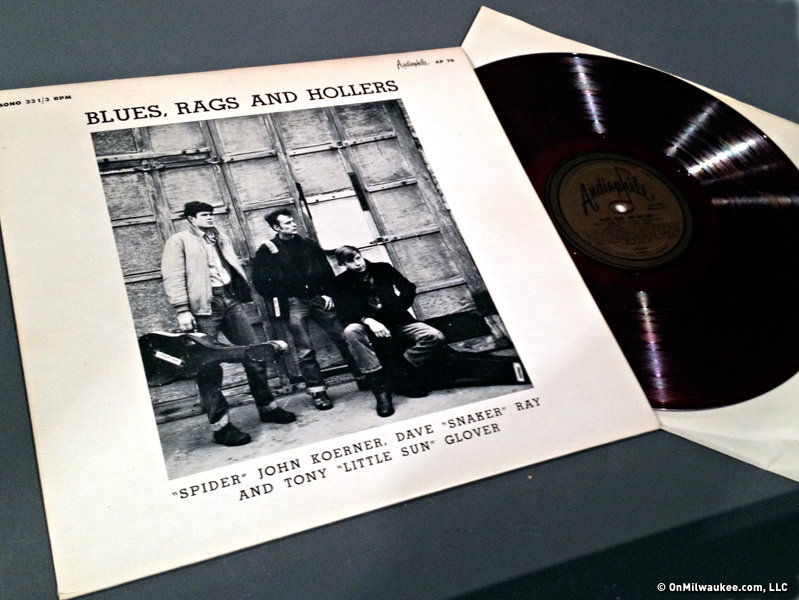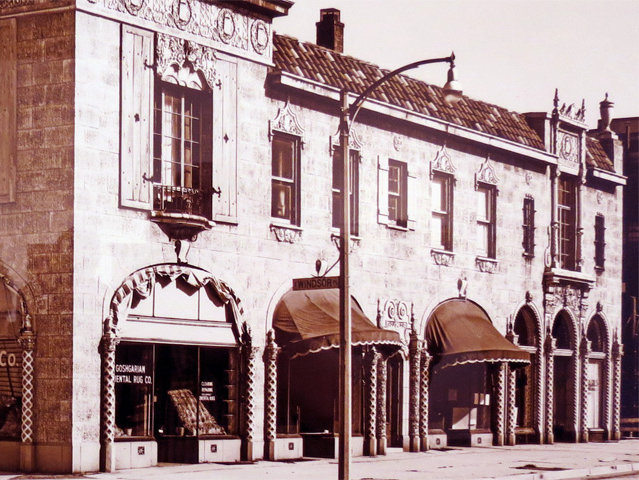{image1}The Avant Garde Coffeehouse, which occupied the upper level of the lovely French Moorish building at 2111 N. Prospect Ave. -- now home to Mystery One books and other businesses -- shone bright for six years in the 1960s, providing a refuge for musicians, poets and artists.
Although it was by no means the only coffeehouse in town, it was the one that really jump-started the counterculture movement in Milwaukee and had that certain aura that has made it memorable.
Opened by a former airport restaurant manager, Harold Strohmeier, in October 1962, the Avant Garde was a haven for beatniks and lovers of rootsy blues and the burgeoning folk music scene.
"The crowd that I had the tendency to hang around with was more into the arts and Milwaukee didn’t really have much at that time," says Strohmeier today. "There used to be a grouping of coffee houses initially, like the The Espresso #1, Zodiac and the Purple Eye and they just kind of evaporated. We didn’t have any place to go."
The Avant Garde -- which had been converted from a clothing factory by Strohmeier and his wife and friends -- fast became the place to catch the latest acts in the folk music scene as well as a bluesmen, who were Strohmeier's favorites.
"I had a big blues and flamenco habit and (the Avant Garde) allowed me to feed my addiction up close," Strohmeier laughs. "We had Big Joe Williams, Fred McDowell, Skip James, Bukka White, Magic Sam, the Rev. Wilkins; these were some of the really important people in blues."
{image2}Perhaps more famous for the people who didn't get to play there -- Leo Kottke and Jose Feliciano were both reportedly passed on by Strohmeier -- the Avant Garde did nevertheless get some big (at the time) names in the scene, from socialist singer songwriter Tom Meisenheimer to erstwhile Byrds member Clem Floyd and 12-string guitarist Dave Ray. John Koerner and the New Lost City Ramblers also played there. However, contrary to rumors that occasionally fly around town, a young Bob Dylan did not play there.
Within two years, young poet Bob Reitman was hosting Wednesday night poetry readings at the Avant Garde, which featured local poets like Bob Watt, later zen exterminator and now general artist about town.
There were readings to jazz music for the beatniks, film screenings and experimental theater, too.
"There were a lot of people like me, still in our mid-teens, who started showing up (and) who were recovering Catholics," remembers Mark Goff. "We were looking for a refuge and the refuge turned out to be the Avant Garde."
{image3}Goff still remembers the day he first encountered the place.
"I was in high school at the time; it was one of the watersheds of my life. It was the second Saturday in May of 1964. I was 16 and it was like the sky opened. I had been looking for something like that. I had heard of Bob Dylan but had never heard him and when I walked in they were playing (Dylan). I think I went there every weekend for two years. Those people (the older beatniks) wouldn't have anything to do with me. I was a kid.
"For people of my age group -- we were sort of the bridge between the beatniks and the emerging counterculture -- the Avant Garde was kind of a natural place for us to come."
By the fall of 1966 Strohmeier was finished with the Avant Garde and he sold out to Dick Weening and Tom Nord. A couple months later, they sold to Gordy Simon and Jim Barker, a pair of Avant Garde regulars.
"I had gotten divorced and that’s one of those operations you have to be right on top of," says Strohmeier about selling the place. "Part of why I opened it was as a place for my wife and I to go. We weren't married yet when it opened."
Poetry continued on Wednesdays and was complemented with Tuesday film nights to screen the works of the New Wave: Antonioni, Fellini, Truffaut; and other weeknights got deeper into blues, bringing up Charlie Musselwhite from Chicago, and allowing musicians to plug in regularly, something Strohmeier did only occasionally.
On the weekends, it became more and more likely that patrons would share the room with loud rock bands, especially the Velvet Whip and the Baroques, which were particular favorites of Barker.
While neighbors had been willing to put up with beatniks and arty types, to an extent, when the music began to rumble, a group of them petitioned the Common Council to shut down the Avant Garde. When the City didn't take the action requested by neighborhood residents, vigilantes began to hurl projectiles through the big arched windows. Some believed many of the spark plugs and bits of hardware were launched from unmarked cars belonging to Harold Breier's police force.
{image4}
Strohmeier explains that during his tenure as owner of the Avant Garde, he was careful to cultivate good relationships with neighbors, knowing the kind of power they could exert.
"I used to be pretty careful with the neighbors," he remembers. "I’d have the place cleaned up early in the morning. I wanted to make sure that the neighbors were pretty content. I had a good relationship with the alderman and pretty good relations with the police department; they didn’t give me much static. Just the one raid and I didn’t have any problem with them after that. They felt comfortable that younger people could go there and their morals wouldn’t be deteriorated."
As other venues became more important rock clubs in town, the Avant Garde started to lose customers. Combine that with a reported Barker drug bust and suddenly the Common Council had little problem revoking the venue's licenses, which it did in October 1968, the same month in which the Avant Garde's lease lapsed.
"By that time," says Goff, "the counterculture was already starting to unwind. That kind of a venue really ceased to exist. It survived the transition from folk to rock, but it was then killed by rock."
After six years of bringing the happening and hip world of music, poetry, film and theater to Milwaukee's East Side, the Avant Garde became yesterday's news.
"It (existed) during a transition period," says Strohmeier. "Before the beat generation the arts scene was limited; Milwaukee was like a wasteland. It opened in late ’62 and by around ’69, it transitioned from essentially a beat scene to hippies. You didn’t need the coffeehouses to go to; (the scene) was expanding everywhere."
Strohmeier admits he doesn't get out to the bars and coffeehouses much these days; he spent plenty of time in them in the '60s. But prodded for a couple of places that capture a piece of the Avant Garde vibe, he points to two:
"There are some around that have it. There’s a place on Center Street (Fuel) that has that feel. I think Comet is another one."
Note: An article by Goff and Mike Angeli, which appeared in the November 1975 issue of Milwaukee's Bugle-American, provided some of the historical information -- and the photos -- for this article.
Born in Brooklyn, N.Y., where he lived until he was 17, Bobby received his BA-Mass Communications from UWM in 1989 and has lived in Walker's Point, Bay View, Enderis Park, South Milwaukee and on the East Side.
He has published three non-fiction books in Italy – including one about an event in Milwaukee history, which was published in the U.S. in autumn 2010. Four more books, all about Milwaukee, have been published by The History Press.
With his most recent band, The Yell Leaders, Bobby released four LPs and had a songs featured in episodes of TV's "Party of Five" and "Dawson's Creek," and films in Japan, South America and the U.S. The Yell Leaders were named the best unsigned band in their region by VH-1 as part of its Rock Across America 1998 Tour. Most recently, the band contributed tracks to a UK vinyl/CD tribute to the Redskins and collaborated on a track with Italian novelist Enrico Remmert.
He's produced three installments of the "OMCD" series of local music compilations for OnMilwaukee.com and in 2007 produced a CD of Italian music and poetry.
In 2005, he was awarded the City of Asti's (Italy) Journalism Prize for his work focusing on that area. He has also won awards from the Milwaukee Press Club.
He has be heard on 88Nine Radio Milwaukee talking about his "Urban Spelunking" series of stories, in that station's most popular podcast.






